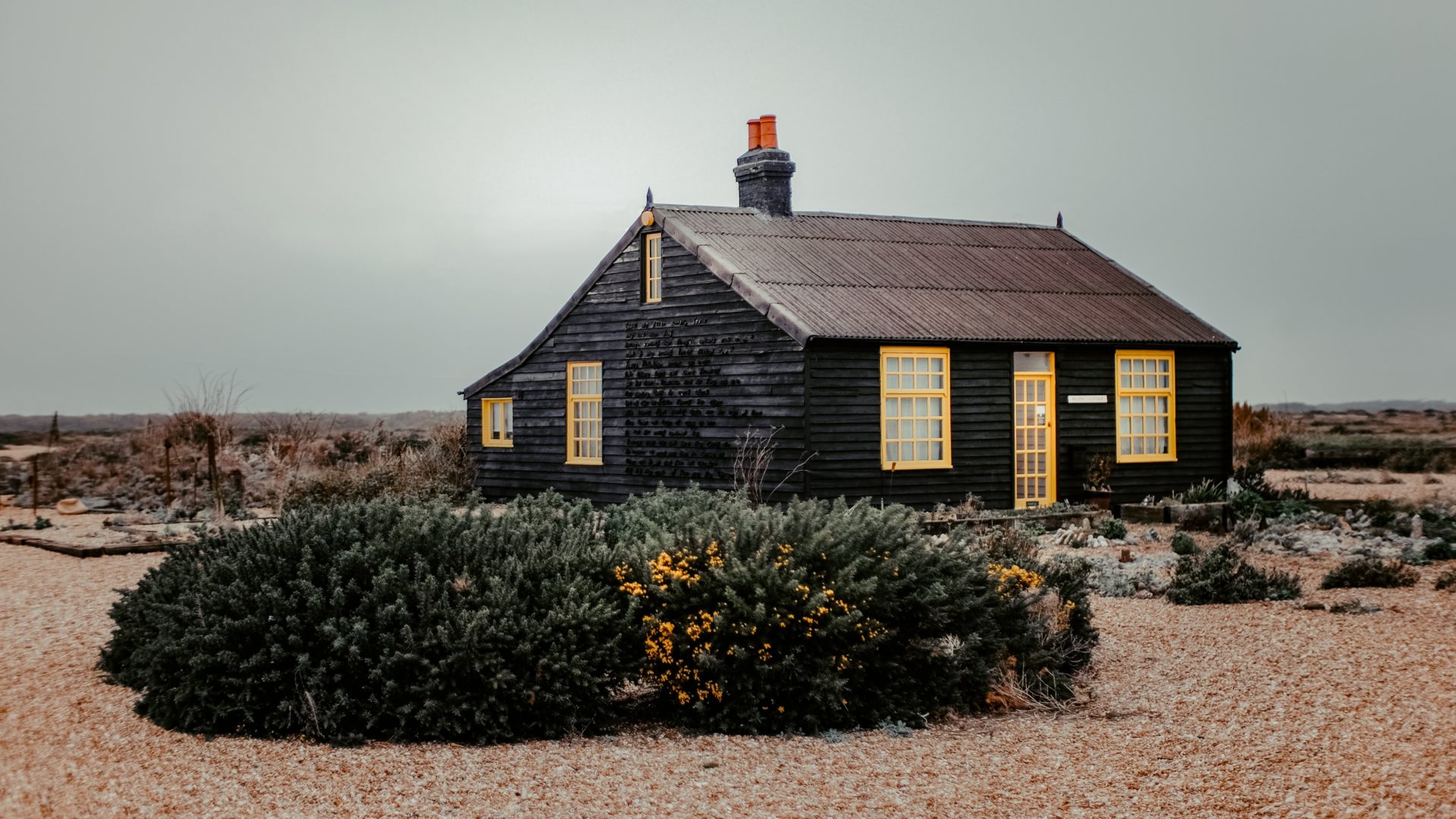
This is the fourth in a new series of blogs by John Wyer, which discuss the A to Z of garden design and horticulture. This time, D is for Derek Jarman and Dungeness…
Back in 2012, I wrote in an article that a garden needed two things – boundaries and a gardener. Derek Jarman’s garden in Dungeness is one of the few that I know that has no boundaries, quite deliberately. Come to that, Jarman’s approach was also (typically) much more than gardening.
Jarman bought Prospect Cottage in 1987, shortly after he was diagnosed with HIV, and he moved there permanently not long afterwards. In many ways this was a withdrawal from the modern realm. But for Jarman, it also became a supreme process of self-expression, almost a distillation of who he was and how he saw the world.
He didn’t set out with that in mind, however. As Keith Collins (long-time collaborator and friend of Derek’s) put it in the forward to Jarman’s 1995 book:
‘The garden started accidentally: a sea-worn driftwood topped with a knuckle of beachcombed bone was used to stake a transplanted dog rose, an elongated lowtide flint protected a seedling seakale from careless feet.’
As time went on, the garden accumulated more and more plants, and as it did so, also increasingly collected found objects. These were assembled in an eclectic and mysterious (yet haphazard) way that somehow summed up Derek Jarman’s relationship with life. But with the creeping onset and progression of his illness, the garden became representative of something deeper.
Collins again: ‘Slowly the garden acquired a new meaning – the plants struggling against biting winds and Death Valley sun merged with Derek’s struggle with the illness, then contrasted with it, as the flowers blossomed while Derek faded.’
For me, this is part of the garden’s bewitching character. The juxtaposition of slightly spooky found objects with plants is the first thing that you notice in the bleakest of settings. Yet these seemingly delicate flowers blooming in these inhospitable surroundings poses a powerful truth.
I had bought the book in 1997 and visited the garden at some point after that – I don’t recall exactly when. I was deeply moved by it. The ideas and images appealed to something deep-seated in me – a sense of rebellion, of doing things differently and a love of the quirky, the unexpected. It also seemed somehow an antidote to the ‘prairie’ movement that was sweeping planting design in the 1990s following Brita von Shoenaich, Noel Kingsbury and Christopher Bradley-Hole’s trip to Germany earlier that decade. In 1999 I got a commission for a large roof garden in the City of London, south-facing and directly overlooking the Thames. At this time, most roof gardens were created as rooftop versions of ground level gardens – lush, leafy havens. But here, the environment was harsh, and I began to understand that the garden at Prospect Cottage was in environmental terms, a microcosm of the site I was involved in. Against all the odds, I convinced the client to go down the route of sea-kale, Verbena bonariensis, Alliums and cotton lavender, with structure provided by olive trees. Beach pebbles and weathered oak beds and decking completed the palette.
Just as Prospect Cottage changed my understanding of what a garden is, this approach changed my understanding of roof gardens forever; of how they work, what is important and the primacy of matching plant to environment.
So for those of you who love control, predictability and topiary, go and visit this garden. And wonder.